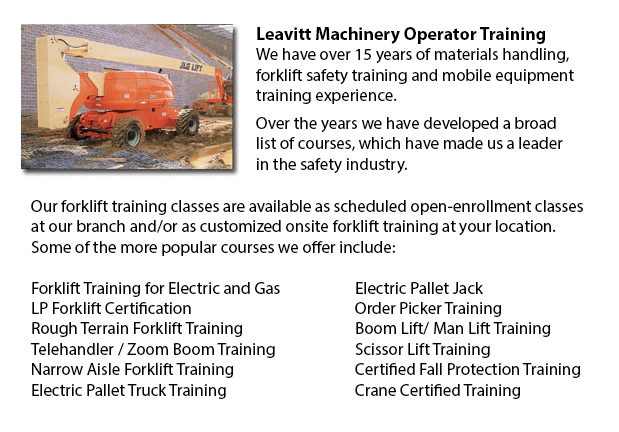
Prince Albert Aerial Platform Training - Aerial lifts might be utilized to accomplish many different duties performed in hard to reach aerial places. Many of the duties associated with this kind of jack include performing routine maintenance on buildings with elevated ceilings, repairing telephone and power cables, lifting heavy shelving units, and pruning tree branches. A ladder could also be utilized for some of the aforementioned projects, although aerial platform lifts provide more safety and stability when correctly used.
There are a lot of designs of aerial lifts available on the market depending on what the task needed involves. Painters often use scissor aerial jacks for instance, which are classified as mobile scaffolding, of use in painting trim and reaching the 2nd story and higher on buildings. The scissor aerial platform lifts use criss-cross braces to stretch and enlarge upwards. There is a platform attached to the top of the braces that rises simultaneously as the criss-cross braces lift.
Container trucks and cherry pickers are another kind of aerial lift. They contain a bucket platform on top of an extended arm. As this arm unfolds, the attached platform rises. Platform lifts utilize a pronged arm that rises upwards as the handle is moved. Boom lifts have a hydraulic arm that extends outward and lifts the platform. Every one of these aerial hoists call for special training to operate.
Training programs offered through Occupational Safety & Health Association, acknowledged also as OSHA, embrace safety methods, system operation, upkeep and inspection and machine cargo capacities. Successful completion of these education programs earns a special certified license. Only properly qualified individuals who have OSHA operating licenses should run aerial platform lifts. The Occupational Safety & Health Organization has developed rules to uphold safety and prevent injury while utilizing aerial platform lifts. Common sense rules such as not utilizing this piece of equipment to give rides and ensuring all tires on aerial hoists are braced so as to hinder machine tipping are noted within the rules.
Regrettably, statistics show that more than 20 operators pass away each year while working with aerial lift trucks and 8% of those are commercial painters. The majority of these accidents are due to inappropriate tire bracing and the hoist falling over; for that reason some of these deaths had been preventable. Operators should ensure that all wheels are locked and braces as a critical security precaution to stop the instrument from toppling over.
Marking the neighbouring area with obvious markers have to be used to safeguard would-be passers-by in order that they do not come near the lift. In addition, markings must be placed at about 10 feet of clearance amid any electrical cables and the aerial hoist. Lift operators must at all times be well harnessed to the lift while up in the air.
-
Prince Albert Forklift Training Courses
Prince Albert Forklift Training Courses - When forklift operator safety training is tailored for illiteracy, training time is lessened by 50 percent. Lift-truck operator driver safety training evaluation, train the trainer and forklift training certi... More -
Prince Albert Heavy Equipment Training
Prince Albert Heavy Equipment Training - The two most common kinds of heavy equipment training are classed into the categories of equipment; equipment which is fashioned with rubber tires or those with tracks. The tracked vehicle are heavy duty machi... More -
Prince Albert Order Picker License
Prince Albert Order Picker License - Order preparation operation or order picking as it is more usually known is a method utilized within warehouse operations and comprises staff called order pickers. The order picker's duty is to take and collect ar... More -
Operator Safety Training, Re-Qualification Training, In-House Instructor Training in Prince Albert
Used in nearly all warehouse operations, boat yards or industrial construction sites, the lift truck is a very important part to be able to help raise and transfer cargo. The reach feature of a lift truck can help improve the applications which the f... More -
Prince Albert Overhead Crane Certification
Prince Albert Overhead Crane Certification - The overhead crane training certification program is designed to be effective with all those participating regardless of language or literacy restrictions. The course has two parts: a practical training se... More -
Prince Albert Heavy Equipment Training Programs
Prince Albert Heavy Equipment Training Programs - There are different types of equipment that are ready to be utilized at any given time on a construction site. These equipment require mechanics to be able to complete the maintenance tasks, operators... More -
Prince Albert Crane Operator Certification
Prince Albert Crane Operator Certification - The process to allow individuals to operate specific kinds of cranes is to take crane operator certification training to be given certification. The certification process consists of classroom learning, ha... More -
Prince Albert Crane Safety Training
Prince Albert Crane Safety Training - Both crane driver as well as their employers should know all the possible issues associated to the use of an overhead crane. All over North America, there is legislation that provides regulation for the safe oper... More

Forklift Certification Prince Albert
TOLL FREE: 1-888-254-6157
Prince Albert, Saskatchewan
forkliftcertificationprincealbert.com
Email Us
About Us


